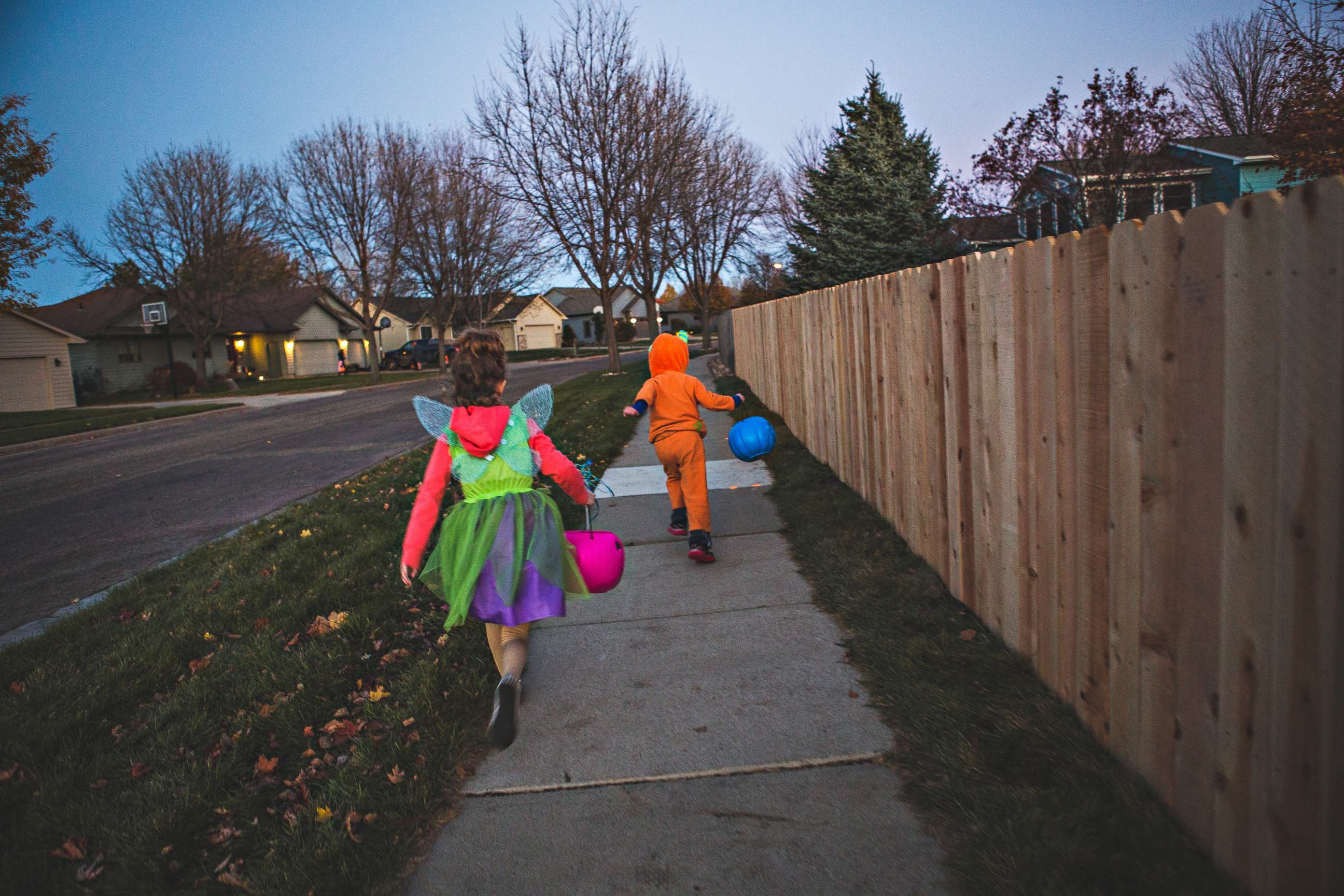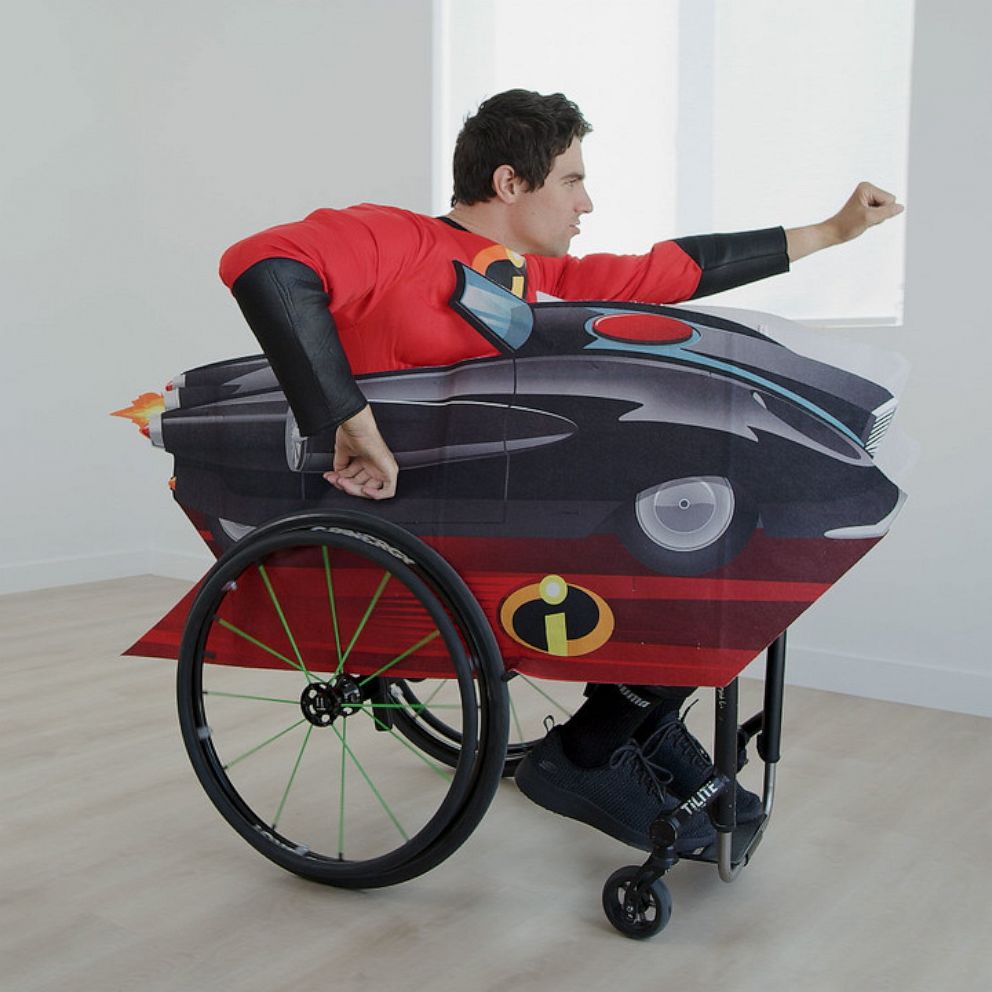Trick-or-treating not recommended in Los Angeles County amid COVID-19 pandemic: Is it safe in your neighborhood?
A doctor shares five tips to safely celebrate the tradition this year.
The coronavirus pandemic has already changed how Halloween will be celebrated in at least one American county.
In Los Angeles County, public health officials on Wednesday said door-to-door trick-or-treating is not recommended "because it can be very difficult to maintain proper social distancing on porches and at front doors." They also also don't recommend events like "trunk or treating," where children go from car to car instead of door to door to receive treats.
One day prior to the announcement, on Tuesday, officials nixed trick-or-treating altogether, along with Halloween gatherings with people not in your household (even if they are held outside), events and parties, which are still not permitted at all this Halloween.
Also on the not allowed list this year for Halloween are carnivals, festivals, live entertainment and haunted houses, according to current guidelines from the Los Angeles County Department of Public Health.
Los Angeles County is the most populous county in the U.S., and since the pandemic began, there have been 6,090 coronavirus-related deaths and 249,859 cases.
While officials advised against trick-or-treating this Halloween, they did provide some alternate suggestions to celebrating spooky season during the pandemic, including car parades and drive-through events, Halloween movie nights at drive-in theaters and decorating homes and yards with Halloween-themed decorations.
Los Angeles County appears to be the first major county in the U.S. to announce guidelines pushing significant changes to the ways Americans traditionally celebrate Halloween.

How the holiday should be celebrated has been in question as the pandemic stretches on, schools struggle to reopen and the U.S. nears 200,000 deaths from COVID-19.
Similar to the reopening of schools, how Halloween will look in each community will depend largely on how well-contained, or not, the virus is in the community, according to Dr. Edith Bracho-Sanchez, an assistant professor of pediatrics and the director of the pediatric telemedicine program at Columbia University Medical Center.
"I don't want to say that trick-or-treating should be completely canceled," Bracho-Sanchez told "Good Morning America." "It's something that communities are going to have to weigh community by community, and that families are going to have to weigh family by family."
Here are five tips from Bracho-Sanchez to keep kids safe while still having fun on Halloween.
1. Check positive testing rates in your community
When it comes to making a decision about going trick-or-treating or heading to a gathering for a socially distanced Halloween celebration in your neighborhood, Bracho-Sanchez said you should look at how the virus is spreading in your community.
"You want that [positive testing rate] number to be less than 5%, ideally even lower than that," she said. "Then you want to look at the number of cases and the number of hospitalizations. They just give you a sense of how widespread COVID-19 is in your community and sort of the baseline level of virus that you're starting with before you even go out trick-or-treating or to another activity."
Factoring in who you live with is also important when it comes to making a decision on whether to spend Halloween with others this year, Bracho-Sanchez said. If you are an expectant mother with young kids, Bracho-Sanchez said you may want to be careful -- even though there isn't currently enough data to suggest pregnant mothers are more susceptible to the novel coronavirus. And if you live in a multi-generational household, with young kids in the family trick-or-treating, elderly relatives in that home may be put at higher risk.
"Look at your community and look at your family circumstances to try to make some of these decisions," said Bracho-Sanchez.
2. Make a neighborhood action plan
If trick-or-treating is your family tradition, Bracho-Sanchez suggested reaching out to your neighbors to see how you can come together to celebrate Halloween and go trick-or-treating in a safe way.
Some of the topics of discussion that can be brought up include:
- How can residents in the neighborhood make sure everyone is keeping their distance
- How can candy be distributed
- Discuss everyone wearing masks while trick-or-treating
-If houses aren't taking part in trick-or-treating, is there a way to alert the neighborhood?
3. 'Flu before boo'
With fall just around the corner, Bracho-Sanchez noted the possibility of flu season coinciding with a possible second wave of COVID-19.
For that extra layer of protection, she suggested getting the flu shot before Halloween, which many pediatricians like to remember as, "Flu before boo."
"It's so cheesy, but it's so good," she said. "It's a really good reminder to families. It's not just COVID-19, it's also the flu, it's also other viruses. So can you with your community and with your family, come up with a plan to vaccinate everyone against the flu this season to protect kids not only from COVID-19, but also from other illnesses that can be very serious to them?"
4. Wear a mask -- period
Bracho-Sanchez said that masks "absolutely need to be part of the outfit" on Halloween.
"It can match, it can be decorated, you could try to get creative about ways to incorporate it into the costume, but it absolutely needs to be a part of it if your child is above age 2," said Bracho-Sanchez.
5. Get creative when handing out candy
If you decide to participate in trick-or-treating festivities, Bracho-Sanchez suggested thinking about ways to hand out candy creatively this year.
"I'm imagining handing out candy from a distance," she said. "If you don't have a driveway, perhaps you have some sort of method to do it from a distance."
One way she suggested adults distribute candy this year is by setting up a hand-sanitizing station for kids before they reach in candy bowls or skip the candy bowl altogether and opt for the same individually wrapped candy option to give to each child.
"There's a number of things, but again, I think it's going to be really important that adults get together and they plan together in their community and their neighborhood or in their building to make this safe for children and for the adults around them," said Bracho-Sanchez.






